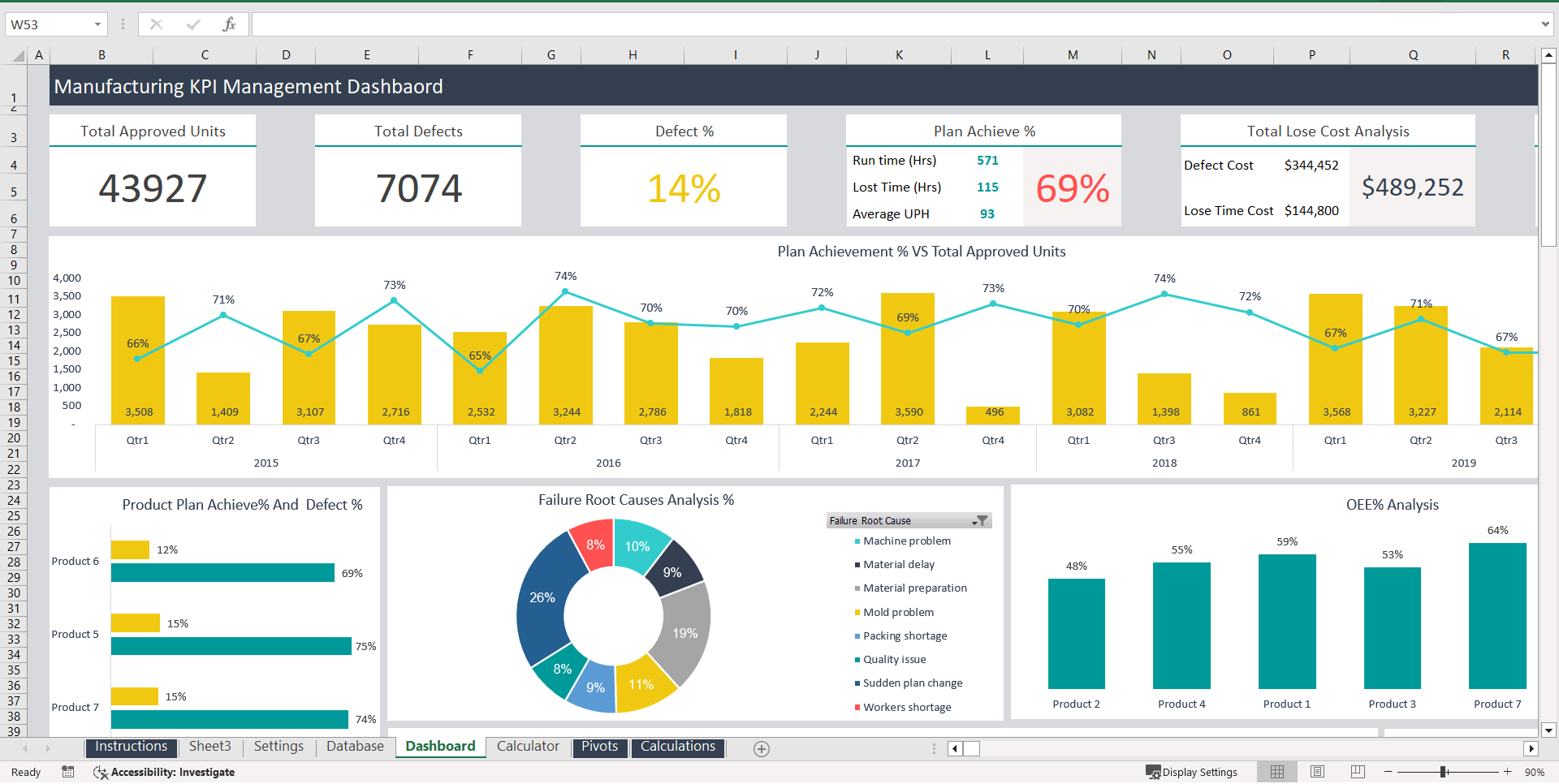Manufacturing KPI Management Excel Dashboard (Excel XLSX)
Excel (XLSX)
BENEFITS OF THIS EXCEL DOCUMENT
- Excel XLSX File
KEY PERFORMANCE INDICATORS EXCEL DESCRIPTION
These KPIs provide manufacturers with valuable insights to help achieve their organizational objectives.
Settings: This sheet serves as the hub for configuring database operations related to "Product Details," "Operating Lines," "Operating Shifts," and "Root Causes of Failures."
Database: This sheet facilitates the recording of periodic production and manufacturing data, providing a structured repository for essential operational information.
Calculator: Equipped with a rapid manufacturing calculator toolkit, this feature enables the swift computation of manufacturing metrics, streamlining analytical processes.
Dashboard: Accessible through this dedicated sheet, the Manufacturing Key Performance Indicator (KPI) analysis and trend visualization empower informed decision-making by offering comprehensive insights into operational performance.
Begin by referencing the manufacturing standards in the settings sheet and inputting data on product names, cycle times, required workers, and defect costs for database tracking.
Next, record operating shifts and times in the second settings table.
Use the failure root cause database table to document all historical failures and create a predicted list for data analysis.
List operating lines and their hourly utilization costs in the final settings table.
The settings are now ready for inputting manufacturing raw data.
Enter daily or periodic manufacturing data in the white columns of the Database sheet. Do not input data in the gray functional cells.
Include the date, event, or production, select the production shift, product name, operating line, actual running time, planned downtime, and any unplanned downtime that will be calculated automatically.
Choose a failure from the root cause dropdown list if there was a loss of time. Record production quantities, OK and defective, and breakdowns if applicable.
Enter new data in the last row for each new entry.
Data can be viewed in a dynamic dashboard. To update data, press Alt > A > R > A for automatic updating.
Key performance indicators (KPIs) and trends will be calculated automatically and can be adjusted using slicers.
Got a question about the product? Email us at support@flevy.com or ask the author directly by using the "Ask the Author a Question" form. If you cannot view the preview above this document description, go here to view the large preview instead.
Source: Best Practices in Key Performance Indicators, Manufacturing Excel: Manufacturing KPI Management Excel Dashboard Excel (XLSX) Spreadsheet, Improve Your Excel






